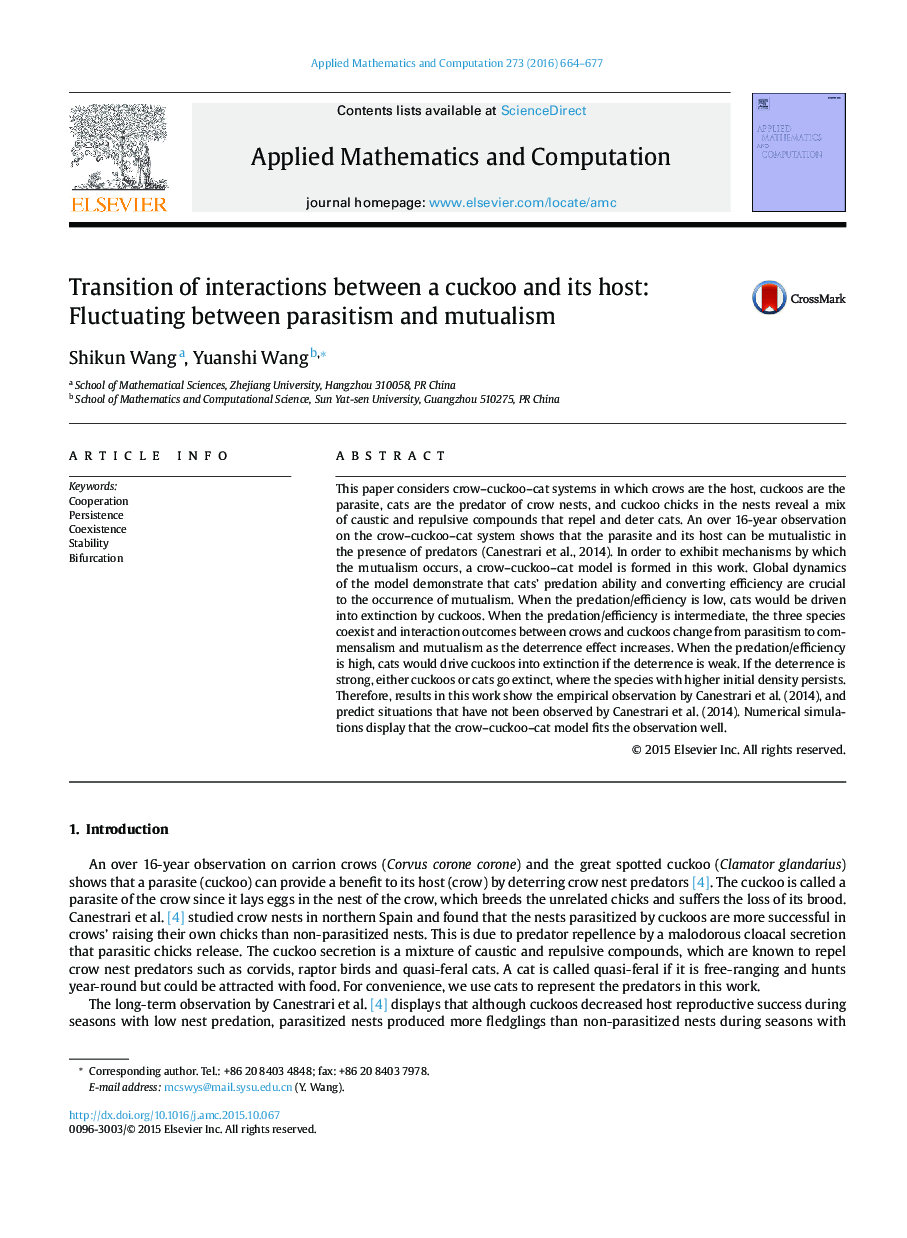| Article ID | Journal | Published Year | Pages | File Type |
|---|---|---|---|---|
| 4626065 | Applied Mathematics and Computation | 2016 | 14 Pages |
•A crow–cuckoo–cat system is modelled.•Dynamics of the model shows mutualism between the parasite (cuckoo) and its host (crow).•Cats predation ability and converting efficiency are exhibited to be crucial to the occurrence of mutualism.•Simulations illustrate the results.•Some predictions are given.
This paper considers crow–cuckoo–cat systems in which crows are the host, cuckoos are the parasite, cats are the predator of crow nests, and cuckoo chicks in the nests reveal a mix of caustic and repulsive compounds that repel and deter cats. An over 16-year observation on the crow–cuckoo–cat system shows that the parasite and its host can be mutualistic in the presence of predators (Canestrari et al., 2014). In order to exhibit mechanisms by which the mutualism occurs, a crow–cuckoo–cat model is formed in this work. Global dynamics of the model demonstrate that cats’ predation ability and converting efficiency are crucial to the occurrence of mutualism. When the predation/efficiency is low, cats would be driven into extinction by cuckoos. When the predation/efficiency is intermediate, the three species coexist and interaction outcomes between crows and cuckoos change from parasitism to commensalism and mutualism as the deterrence effect increases. When the predation/efficiency is high, cats would drive cuckoos into extinction if the deterrence is weak. If the deterrence is strong, either cuckoos or cats go extinct, where the species with higher initial density persists. Therefore, results in this work show the empirical observation by Canestrari et al. (2014), and predict situations that have not been observed by Canestrari et al. (2014). Numerical simulations display that the crow–cuckoo–cat model fits the observation well.
